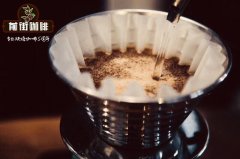History of Brazilian Coffee beans in Santa Lucia Manor Brazilian honey treats yellow bourbon coffee
Brazilian Coffee Bean
Brazil is the largest coffee producer in the world, providing nearly 45% of the world's coffee raw beans.
The length of the dry season in the country may even affect coffee prices around the world. Brazil's main producing areas are Minas Gerais Minas Gerais, Sao Paulo Sao Paulo, Bahia Bahia and Esp í rito Santo Espirito Santo, which account for 90% of the country's exports.
Our common Santos Santos and Mochiana Mogiana come from Sao Paulo, Sirado Cerrado and South Minas Sul de Minas in Minas Gerais, because of their high altitude and high production of boutique Brazilian coffee beans. Siladow is located to the west of Minas Gerais, a flat plateau with an elevation of 750m~1200m.
The hilly woodland of 700m-1200m in South Minas is the earliest production area of Brazilian coffee. Due to the improvement of labor cost, it is now mostly harvested by machinery, and it is also the earliest commercialized area of coffee. We can see that many large exporters are also here. Bahia, located in the north of Brazil, mainly produces water washing in Brazil, and Espiritu Santo, near the sea, is the main export area of Brazilian Robsta varieties.

Santa Lucia Manor
Helcio Carneiro Pinto began growing coffee with his mother at the age of 15, married Glycia Pereira Carneiro in 1976, and has since taken over the Santa Lucia estate (Fazenda Santa Lucia).
In the 1990s, when the world's boutique coffee began to sprout, Helcio jumped on the bandwagon and realized that the increase in production was meaningful only if the quality was improved.
He became one of the founding members of APROCAM, and in order to improve the quality of coffee in Carmo de Minas, they worked with universities and scientific research institutions to introduce PN peel solarization (Pulped Natural) treatment and related machinery to successfully enhance the fruit tone, sweetness and rich layering of coffee, such as 9 PN treatment has become a standard for Brazilian boutique coffee.
With the development of Santa Lucia Manor, Helcio began to visit boutique coffee producers in other countries to continuously refine the knowledge and technology of coffee cultivation, thus making Santa Lucia Manor an indicator in the boutique coffee industry today.
Yellow bourbon honey treatment
Bourbon and Typica are the oldest native species of Arabica coffee, from which all kinds of boutique coffee come from.
In general, when the coffee fruit is ripe, the skin changes from green to red, but Yellow Bourbon stays in the bright yellow appearance, so it is named! First discovered in Brazil, Huang Bourbon is now the winner of COE competitions and a representative variety of Brazilian boutique coffee, with typical flavors of nut, cocoa and citrus flavors.
Most Brazilian boutique coffee uses the peel-free method (Pulped Natural), but this batch uses the relatively rare honey treatment, which removes the peel first, but retains more pectin in order to bring out more fruit flavor and sweetness, and make the taste richer, just like the PN peel method.
Treatment of yellow bourbon honey in Santa Lucia Manor
Fazanda Santa Lucia, Yellow Bourbon, Honey
■ countries: Brazil / Brazil
■ producing area: Camominas / Carmo de Minas
■ producer: Santa Lucia Manor / Fazenda Santa Lucia
■: 9-1250 m above sea level
■ variety: Yellow Bourbon
■ treatment: honey treatment / Honey
Important Notice :
前街咖啡 FrontStreet Coffee has moved to new addredd:
FrontStreet Coffee Address: 315,Donghua East Road,GuangZhou
Tel:020 38364473
- Prev

Costa Rica Brenka Treasure Estate Coffee Introduction and Flavor Features Honey Treatment Features
Brunca Treasure Estate Coffee Introduction Brunca (Brunca) producing area of Rivas town (Rivas), a Costa Rican capital San Jose (San Jose) is located about 150 kilometers southeast of the drive to three and a half hours, the middle also through the elevation of 3000~3400 meters, can enter the remote coffee producing area, a has always been considered not to produce good coffee producing areas. This one ran for about three years.
- Next
Indonesia Mantenin Kayou Diamond Village Coffee Bean Characteristics and Flavors Plateau Village Project Introduction
Traditionally, coffee from Sumatra can be called mantenin. Sumatra coffee is famous, but it is not produced on the whole island. Among the ten provinces on the island, only Subei Province and Aceh Province produce coffee. The best coffee in Subei is produced around Lake Toba, mostly by the Batak People, the local indigenous people.
Related
- Beginners will see the "Coffee pull flower" guide!
- What is the difference between ice blog purified milk and ordinary milk coffee?
- Why is the Philippines the largest producer of crops in Liberia?
- For coffee extraction, should the fine powder be retained?
- How does extracted espresso fill pressed powder? How much strength does it take to press the powder?
- How to make jasmine cold extract coffee? Is the jasmine + latte good?
- Will this little toy really make the coffee taste better? How does Lily Drip affect coffee extraction?
- Will the action of slapping the filter cup also affect coffee extraction?
- What's the difference between powder-to-water ratio and powder-to-liquid ratio?
- What is the Ethiopian local species? What does it have to do with Heirloom native species?

